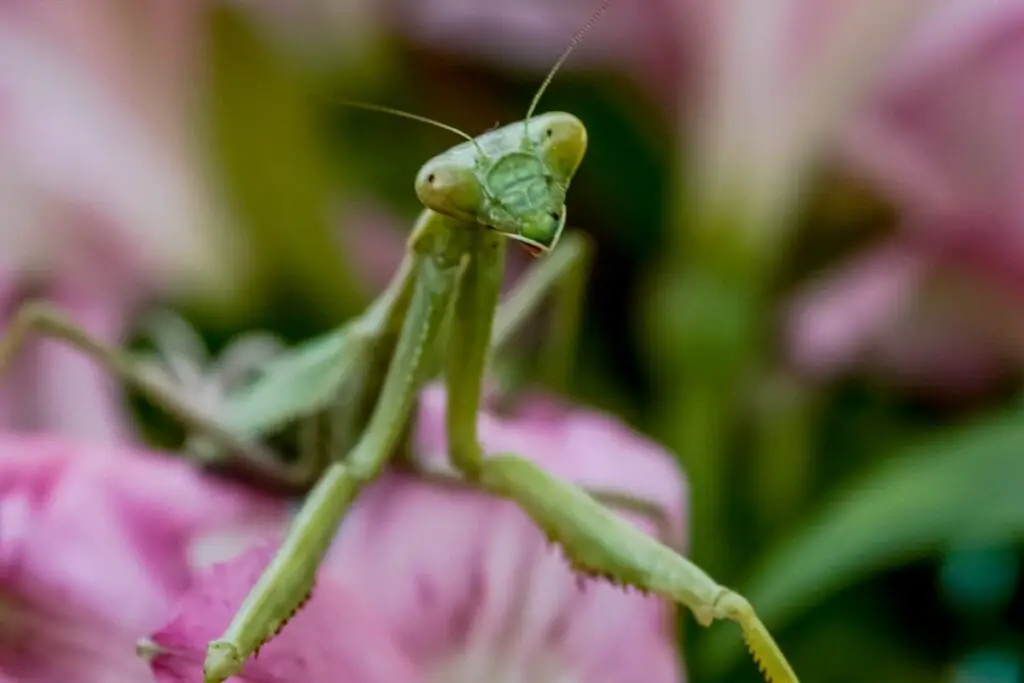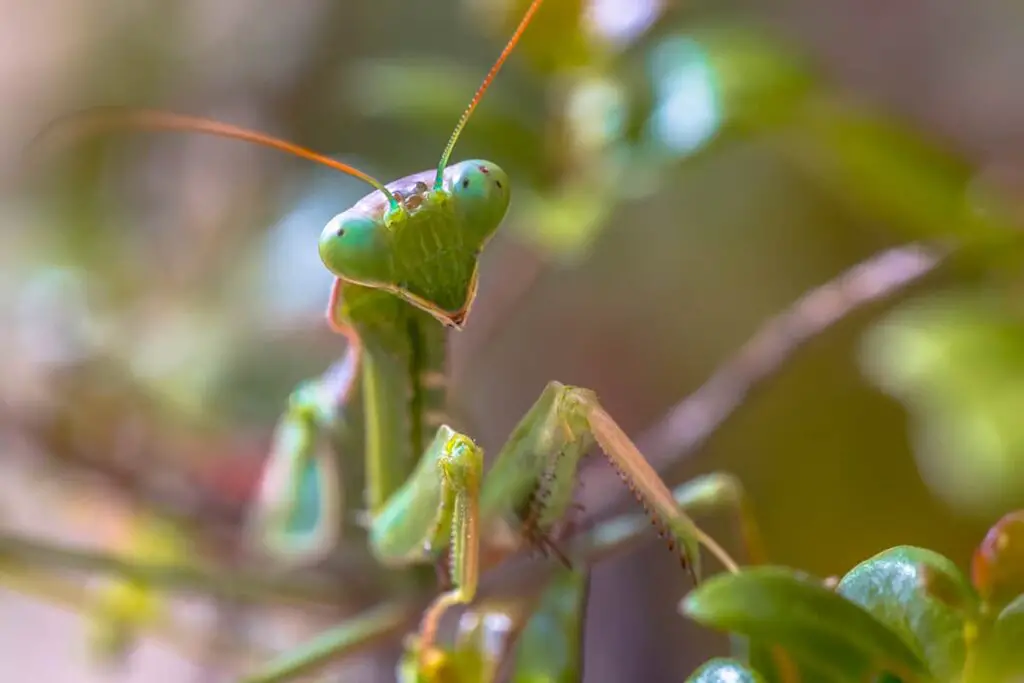As a praying mantis enthusiast, keeping your insects healthy is a top priority. Unfortunately, mantises can suffer from various diseases that may affect their wellbeing. Recognizing the common illnesses that affect these fascinating creatures is key to ensuring they lead long and healthy lives. Among these ailments, fungal infections stand out due to their visibility as green or pale blotches on the mantis’s skin, signaling potentially serious health issues.
Being aware of the threats can help you take preemptive measures to protect your mantids. Proper habitat maintenance, for instance, helps prevent the conditions that allow fungal infections to thrive. In addition, mantises can sustain injuries from physical trauma or improper handling, which may lead to secondary infections if not treated promptly.
Understanding the health challenges is the first step in safeguarding these predators, known for their beneficial role in controlling pests. By staying informed, you become better equipped to create a safe and comfortable environment for your praying mantids, ensuring they can continue their role as fascinating, natural pest controllers in your garden or as unique, educational pets in your home.
Understanding Mantises
When you’re looking to keep a healthy mantis or simply understand these fascinating insects better, it’s crucial to begin with their anatomy and key behaviors.
Anatomy and Physiology
Mantises, with their characteristic triangular heads and raptorial front legs, are unique among insects. Their heads can rotate 180 degrees, allowing them to scan their surroundings with two large, compound eyes. This adaptation is critical for both prey detection and predator avoidance. The Mantidae family contains over 2,400 species, each with slight variations in color and size, but all share this common, efficient hunting anatomy.
Habitat and Behavior
Mantises are found in diverse habitats, ranging from temperate to tropical environments. They are ambush predators, often camouflaged among leaves and branches, waiting patiently for prey. Behaviorally, mantises are known for their “praying” stance, where they hold their front legs folded as if in prayer. The reproductive process involves the laying of an ootheca, a protective case that ensures the survival of the next generation of mantises. Each species’ ootheca varies in size and shape, intricately adapted to their specific environmental challenges.
Common Diseases in Mantises
Recognizing and treating diseases in your mantises are crucial to their health. Here are some common ailments you should be aware of.
Fungal Infections
Fungal infections occur when spores make contact with a mantis, often in environments with high humidity. If you notice your mantis with white, cotton-like patches, they could be suffering from a fungal infection. To prevent this, ensure proper ventilation and avoid overly damp conditions in their habitat.
Parasitic Infestations
Mantises can fall prey to parasitic infestations, such as nematodes and mites. Symptoms may include abnormal behavior or lethargy, and if you observe these, examine your mantis closely. Increased cleanliness and monitoring can help prevent these pests from harming your mantises.
Prevention and Treatment
Mantises face various diseases that can be tough to spot but knowing the preventative measures and treatment options can help you keep your pet healthy.
Environmental Management
You are the first line of defense against diseases in mantises by managing their environment. Ensure cleanliness in the habitat; regularly remove uneaten food and waste to prevent mold and bacterial growth. Maintain humidity levels specific to your mantis species to avoid stress, which can lead to illness. Adequate ventilation is key to preventing respiratory issues, which are common in stagnant or overly moist enclosures.
Medical Interventions
When mantises do fall ill, certain medical interventions can aid their recovery. If you notice symptoms such as lethargy or lack of appetite, consult a veterinarian with experience in invertebrates. They might recommend treatments that can include antibiotics for bacterial infections or antiparasitic medications if parasites are the cause. Remember, precise diagnosis and treatment are crucial, as incorrect medication can harm your mantis.
Frequently Asked Questions
When caring for your praying mantis, being aware of potential health issues is crucial for maintaining their well-being. This section addresses common concerns about their health.
What are the most common diseases affecting praying mantises?
Praying mantises can suffer from various diseases, with fungal infections being particularly prevalent. These infections can be exacerbated by inadequate ventilation and high humidity within their enclosures.
How can I tell if my praying mantis is experiencing a fungal infection?
If your praying mantis shows signs of lethargy, discoloration, or a cotton-like growth on its body, these may indicate a fungal infection.
What symptoms indicate that a praying mantis is dying?
Signs that a praying mantis is nearing the end of its life include lack of movement, refusal to eat, a noticeable decrease in strength, or a drooping posture.
How do mantises get afflicted by the ‘black death’ condition?
The ‘black death’ is a colloquial term for a condition where a mantis turns black and is often associated with improper molting, infections, or poor environmental conditions.
What should I do if my mantis has an injured abdomen?
For an injured abdomen, ensure that your mantis’s enclosure is clean to prevent infection, and handle it with care. If the injury seems severe, consulting with an expert on mantis care may be necessary.
What are the signs that a praying mantis has a parasitic infection?
Indicators of a parasitic infection can include visible parasites on the mantis’s body, loss of appetite, swelling, or unusual discharge.
Driven by a passion for those tiny creatures that rule our world, we at Bug Domain strive to be your go-to resource for information on insects.




